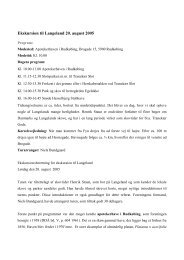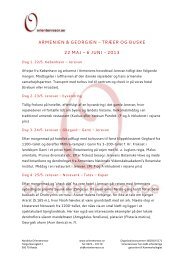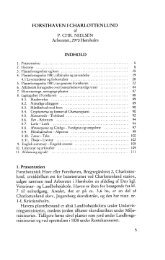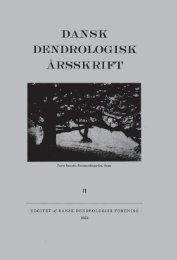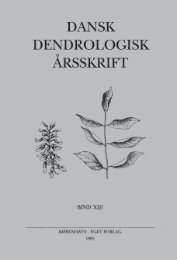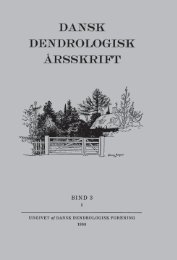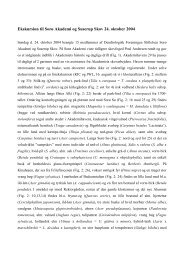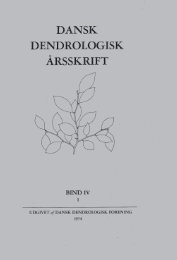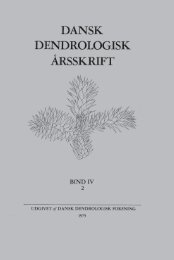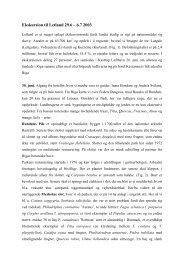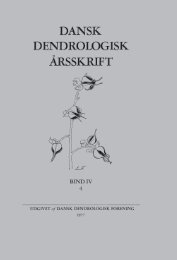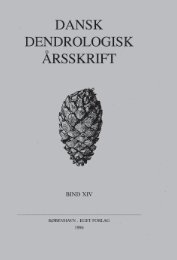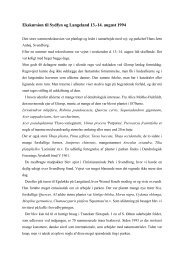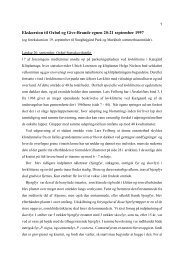Volume 2,1 (1963) - Dansk Dendrologisk Forening
Volume 2,1 (1963) - Dansk Dendrologisk Forening
Volume 2,1 (1963) - Dansk Dendrologisk Forening
You also want an ePaper? Increase the reach of your titles
YUMPU automatically turns print PDFs into web optimized ePapers that Google loves.
vary from greyish green to dark green. The one year shoots are not<br />
pruinose and the winterbuds are mostly resinous. Finally the cones<br />
are about 10 cm long, remaining for some years on the tree and leaving<br />
the lower cone scales on the branch when they fall off. It grows<br />
from British Columbia (The dry interior zone) to Colorado and<br />
California where it meets the following.<br />
Pinus Jeffreyi differs chiefly in the often longer needles, the not<br />
orange-coloured bark, the pruinose surface of the one year shoots,<br />
the want of resin on the buds and the at least 20 cm long cone which<br />
generaly will fall off in the autumn after their opening. American botanists<br />
and foresters state that there exist lots of intergrades. Although<br />
I have not seen intermediate types of cones, they mav exist,<br />
but I think that they are rare. I have a suspicion that we here<br />
have two well defined and well separated species, and all that has<br />
been said about their being two types of one species originate from<br />
descriptions of single trees. I have seen in British Columbia and<br />
Washington lots of fine specimens of P. ponderosa without resin on<br />
the budscales contrary to the original description. And here in Denmark<br />
I have met some other typical trees of P. Jeffreyi without<br />
pruinose twigs and others with resin on the buds, this is not at all in<br />
accordance with the original description. Further investigations may<br />
solve this problem.<br />
4. It was mentioned long ago that Abies grandis Lindl. and<br />
A. concolor (Gord.) Engelm. were closely allied and connected by<br />
A. Lowiana A. Murr. American foresters have been well aware of<br />
this and say that they are not able exactly to check the limits between<br />
grandis and what they call concolor, which partly must correspond<br />
to our true concolor. I have not seen but grandis in America; once in<br />
the lower Cascades in southern Oregon they showed me some trees,<br />
that they had been told were concolor but admitted, were very difficult<br />
to distinguish from grandis. I was quite unable to call them anything<br />
but grandis although some features in the bark reminded of<br />
Lowiana. I regret very much, that I had not time enough to study<br />
this problem over there, but I feel sure that this uncertaianty as to<br />
determine these types exactly must originate from the total want of<br />
any sharp limit between the types. Maps of the area of Abies grandis<br />
give this species a rather large area in the lower Rockies in southern<br />
British Columbia and northern Washington. I will be really astonished<br />
if genuine grandis grows there. The statement must either<br />
be wrong or be due to the ocurrence of Lowiana-types. In this connection<br />
it must be mentioned that SYRACH LARSEN has pollinated



